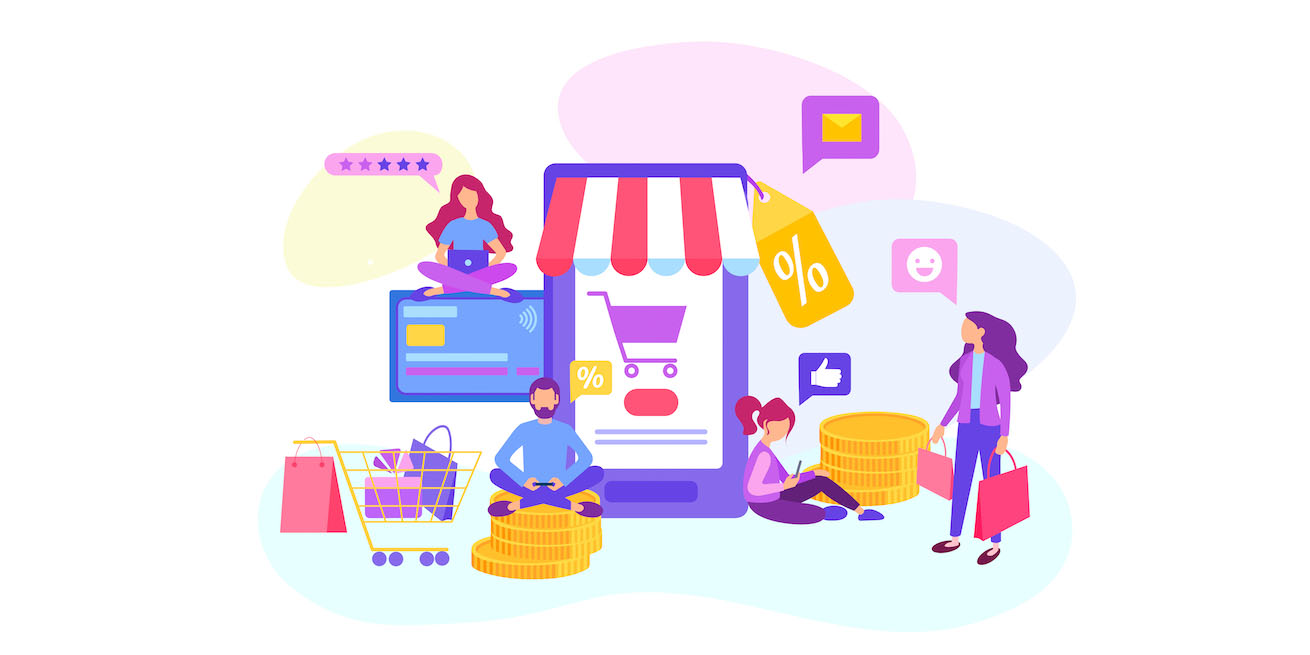Have you bought something online this month? Of course you have!
But what about your parents or even your grandparents? Because it allows us to buy almost anything without leaving home, e-commerce has no age limits.
The adoption of e-commerce is one of the most significant e-commerce trends in 2021, given that literally each and every person on the planet has faced the COVID-19 pandemic.
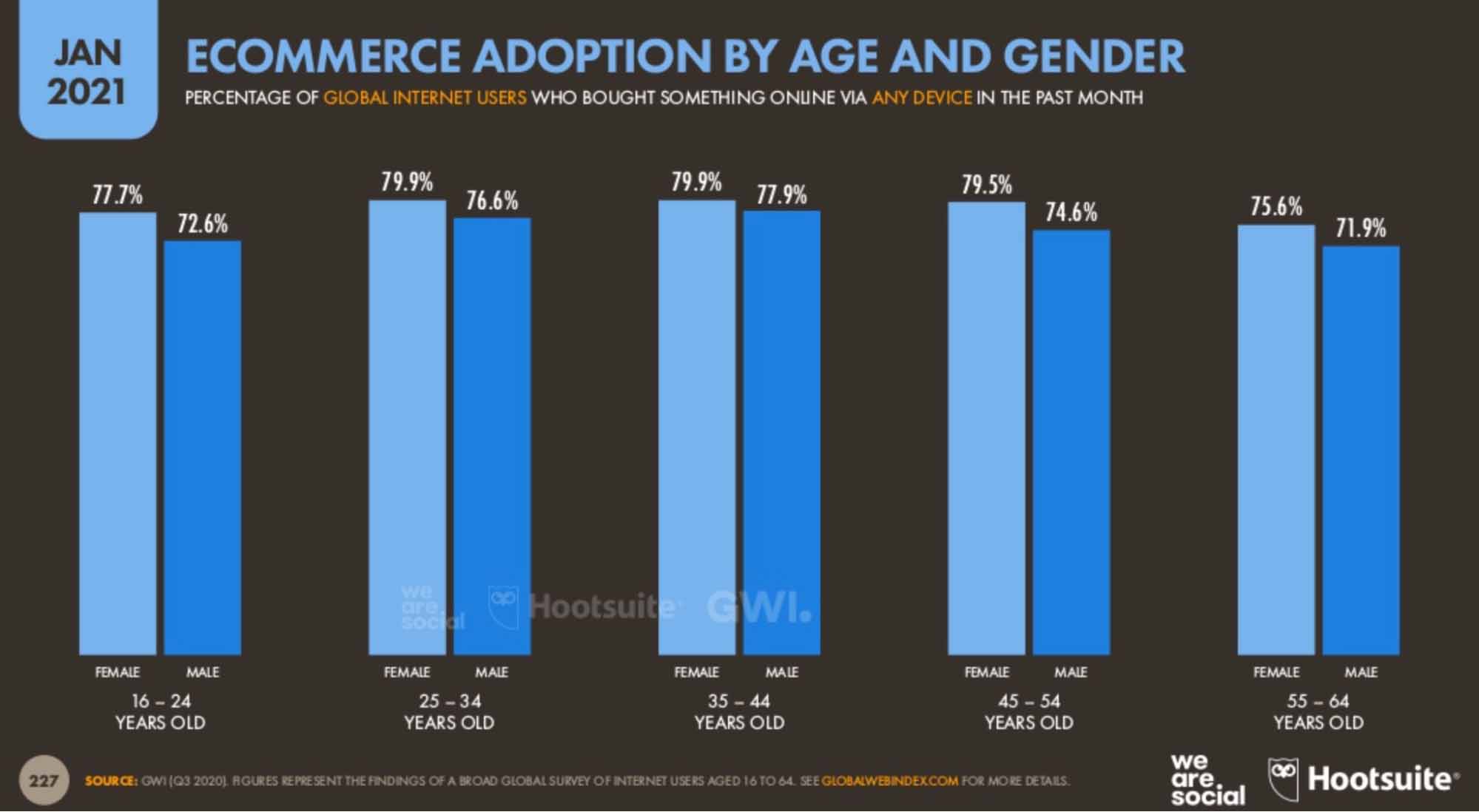
According to the Global State of Digital 2021 report by Hootsuite, online shopping has already been adopted globally by a majority of consumers from 16 to 64 years old.
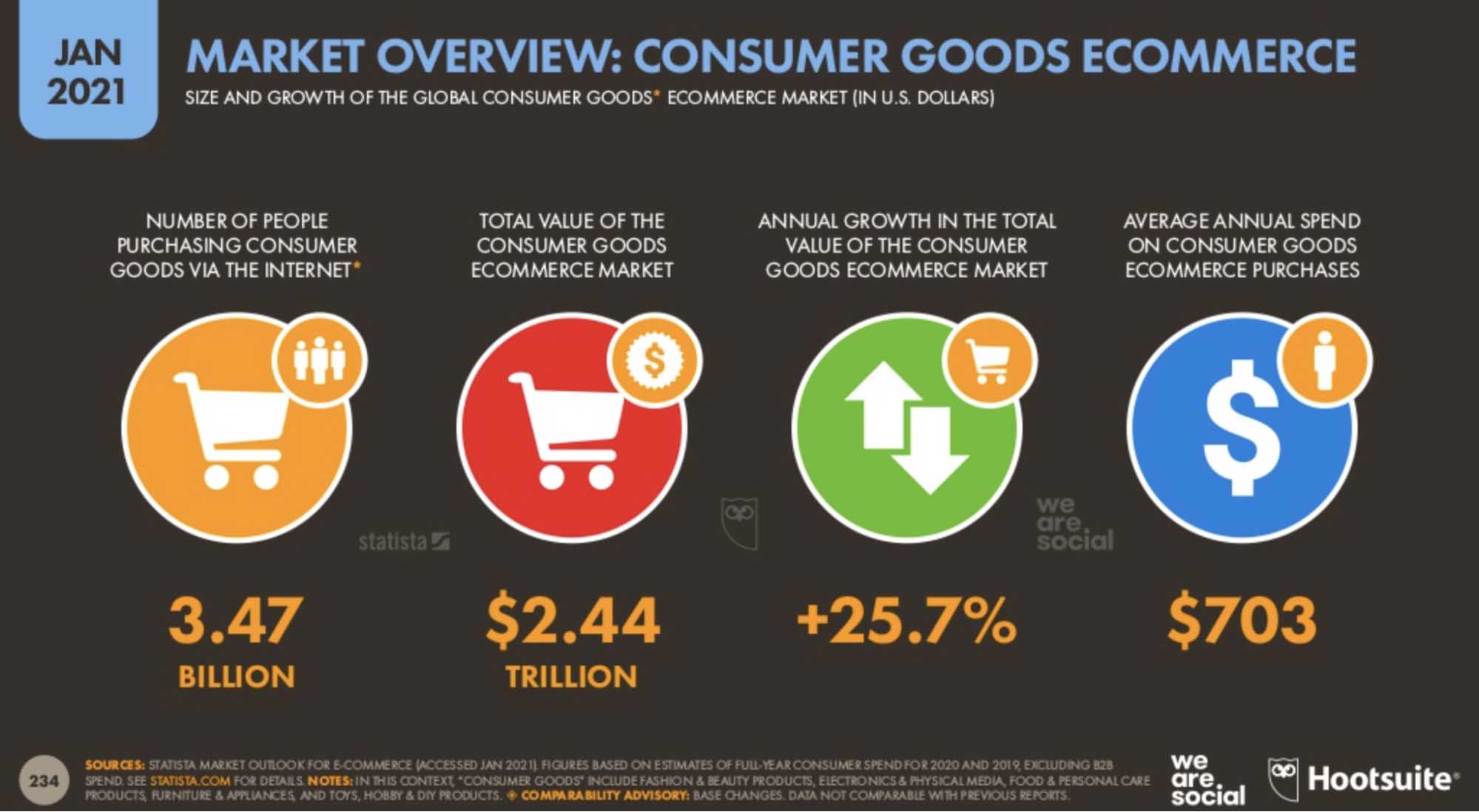
Comprising such industries as food and personal care, electronics and physical media, fashion and beauty, hobby and DIY as well as furniture, appliances, and toys, the consumer goods e-commerce market grew almost 26% worldwide in 2020 compared to the previous year.
In total, 3.47 billion people spent $2.44 trillion online with an average annual spend of $703.
13 E-Commerce Trends You Should Consider Right Now
Because the e-commerce industry changes lightning fast, e-commerce marketers have a tendency to search for the next big thing and use it to their advantage.
How to find these big things? In e-commerce, the letter “E” stands not only for electronic.
If you’re eager to evolve as an e-commerce marketer and expand your e-commerce business faster, you should build an e-commerce experience full of encouragement and entertainment.
To do that, you should learn to envisage customer behavior and ease the customer journey. This is also the best way to create the latest e-commerce trends instead of finding them.
In an interview with Forbes, Jeff Bezos says he gets to work in the future of e-commerce. Being three or four years ahead of the rest of the industry, Bezos has created a setup that allows Amazon not to keep up with the latest e-commerce trends but to create them.
What is trending in e-commerce right now? Here are 13 trends that should be relevant for any e-commerce business throughout the 2020s.
E-commerce Trend 1. Website Optimization
Everything starts with optimizing your online store. When it comes to e-commerce website optimization, there’s always room for improvement, which is directly related to the fact that customers’ behavior patterns are constantly changing.
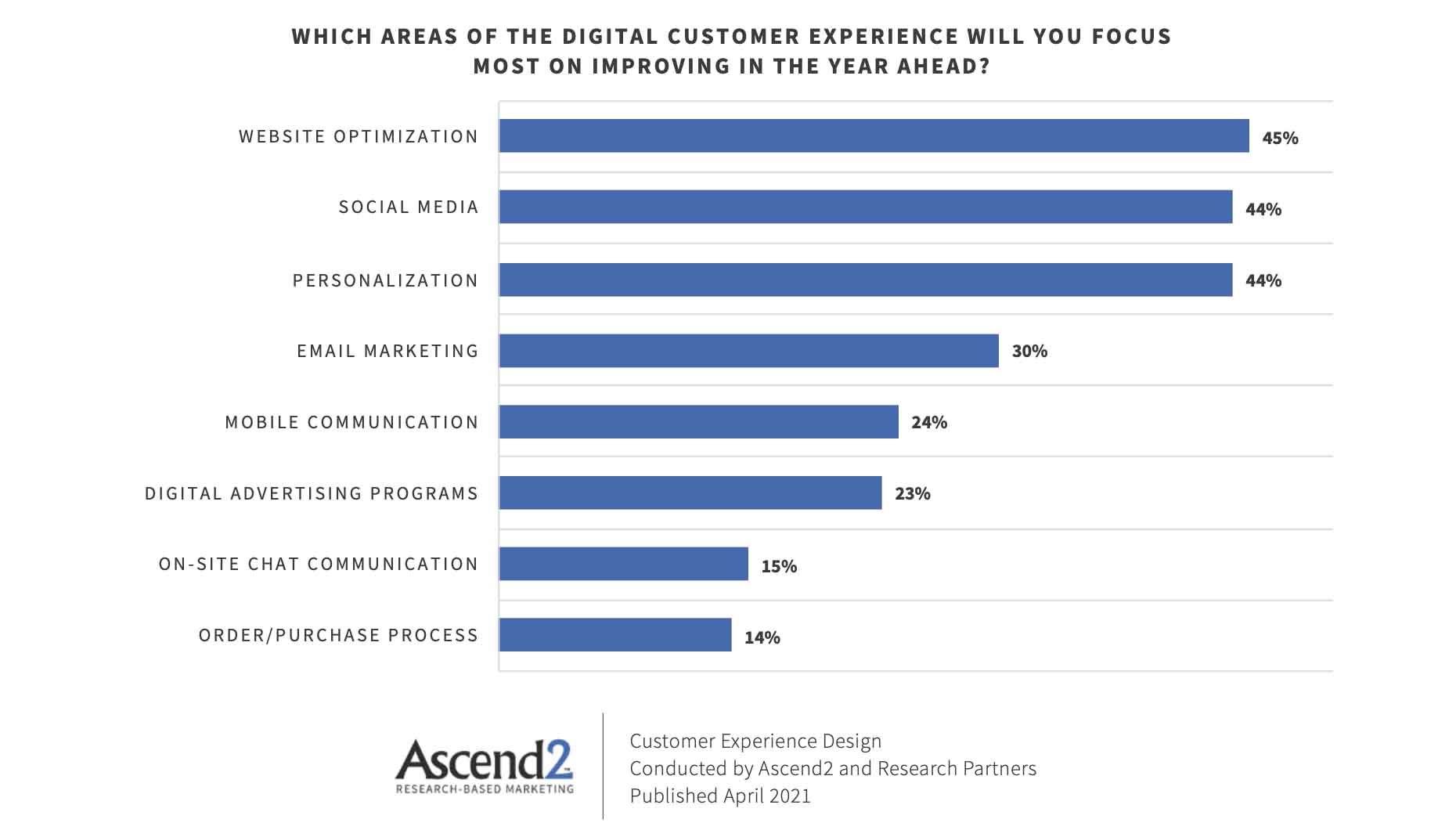
According to the Customer Experience Design report by Ascend2, website optimization is the top customer experience area for digital marketing professionals to improve after social media, personalization, email marketing, mobile communication, digital advertising programs, on-site chat communication, and the order–purchase process.
E-commerce Trend 2. Headless Commerce Architecture
If you’re dreaming about your online store becoming a big player someday, consider building your website from the ground up instead of using a top e-commerce platform, which is a really tempting choice when your business hasn’t yet grown into something big.
When it comes to website creation and optimization, one of the hottest trends in the e-commerce industry is building a website with a headless architecture.
Because the front end and back end are separated in a headless commerce website, this advanced web development approach brings three game-changing benefits:
- The possibility of integrating any existing functionality. Since headless commerce is an API-based approach, you can add any possible tools and services without interference.
- The highest level of flexibility. You can make changes to your e-commerce website in real time without shutting it down for maintenance.
- A unique omnichannel experience. Headless commerce allows you to get the most of omnichannel marketing and create a simple and personalized shopping experience for every customer across all devices and platforms.
The adoption of headless commerce is in progress. But this method of e-store development is still expensive and requires hiring a highly experienced team of developers because of the complexity of its implementation.
E-commerce Trend 3. Dynamic Product Recommendations
Almost every e-commerce website has a common problem: The lion’s share of purchases happen under unexpected circumstances and in unexpected areas of the website.
Dynamic product recommendations are the next e-commerce trend not only to deal with customers that aren’t sure about their buying decisions but to help trace their behavior and, in such a way, minimize uncertainty in customer decisions.
Dynamic product recommendations are generated by an engine integrated into an online store. Based on previously collected data about customer behavior, a recommendation engine can create two kinds of recommendations:
- Generic recommendations apply to a broad audience. These include discounted products, trending and hot deals, new arrivals, and other items you’d like your customers to see.
- Personalized recommendations come in two types: upselling recommendations to encourage customers to buy extra items at a lower price and cross-selling recommendations to encourage customers to buy related products of nearly the same price.
One more huge advantage of dynamic product recommendations is that along with placing them across multiple pages of your website, you can send them via email to different groups of customers based on their habits and interests.
E-commerce Trend 4. Augmented Reality Visual Search
Augmented reality (AR) is one of the biggest upcoming trends in e-commerce that is going to bring huge changes to the industry.
According to data from Ipsos and Google, more than 90% of Americans currently use or would consider using visual search and AR for shopping because AR technology provides immersive, realistic, and accessible experiences compared to other ways of demonstrating products.
With Google Lens, shopping has no boundaries and shoppers can buy everything they see.
E-commerce Trend 5. Lightning Fast M-Commerce Experience
E-commerce today is pretty much m-commerce, and this must be reckoned with.
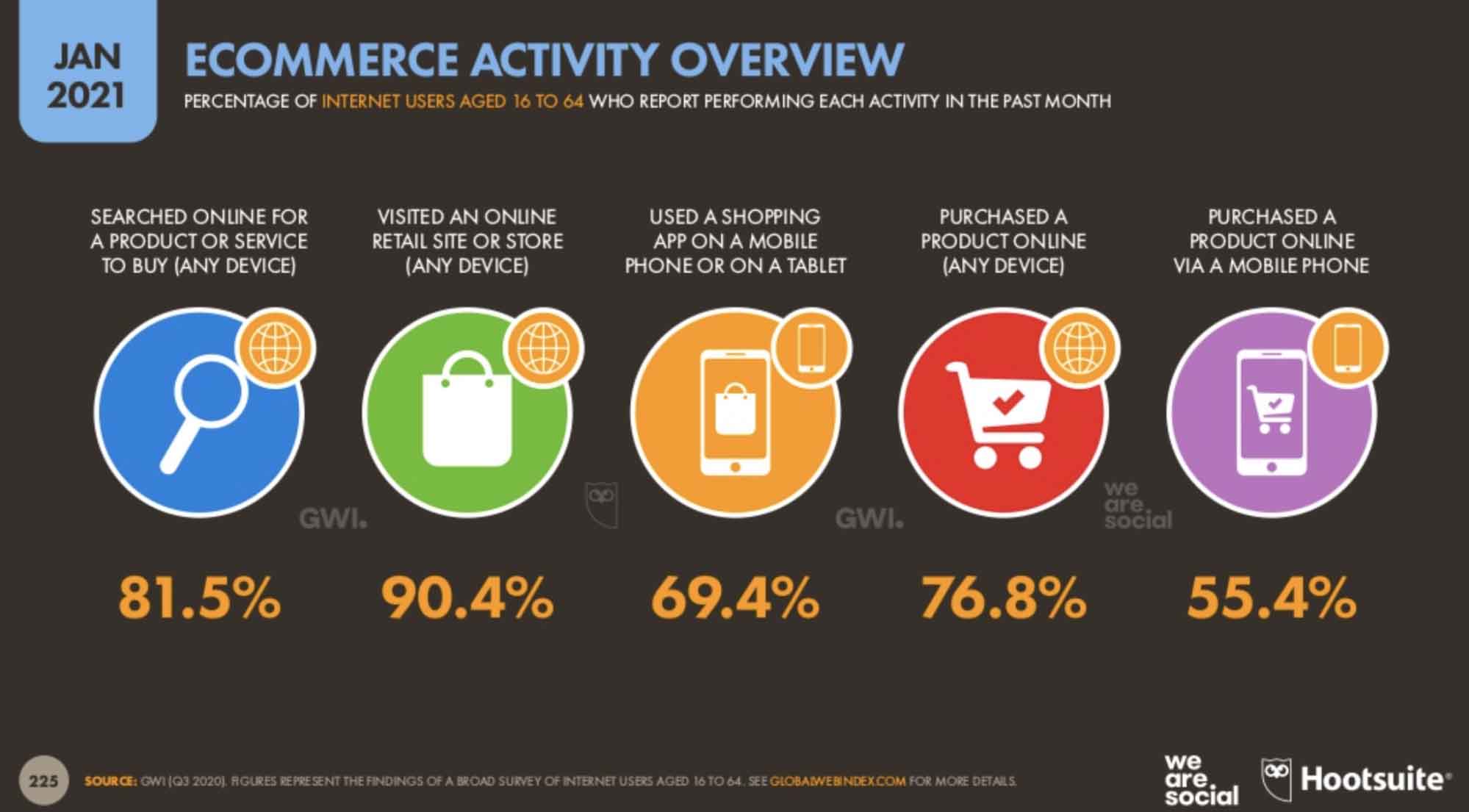
According to data gathered by Hootsuite for the Global State of Digital 2021 report, in 2020:
- 69.4% of shoppers used a shopping app on a mobile phone or tablet
- 55.4% of shoppers purchased a product online via a mobile phon
According to Think with Google, mobile experiences are one of the factors driving business growth — 46% of shoppers prefer to finish all touchpoints in the shopping journey using their smartphones.
When it comes to the mobile experience, website loading speed is the major optimization factor to consider. Did you know that a one-second delay in mobile loading times can decrease conversions by 20%?
Billal Qureshi, a performance lead for apps and mobile at Google Canada, offers five ways to boost the speed of a mobile website:
- Use Google’s Test My Site tool to see what exactly you need to improve.
- Decrease the weight of each website page to less than 1,000 KB.
- Get rid of image carousels that run automatically.
- Add autocorrection to your search and move the search box to the top of the website.
- Optimize checkout to a few simple taps.
Finally, consider using such technologies as Accelerated Mobile Pages and Progressive Web Apps.
E-commerce Trend 6. Humanized Customer Experience & Support
Because of the pandemic, many people feel exhausted being online all the time. Lack of human communication with customers has forced businesses to support the recent trend in e-commerce and humanize the online experience.
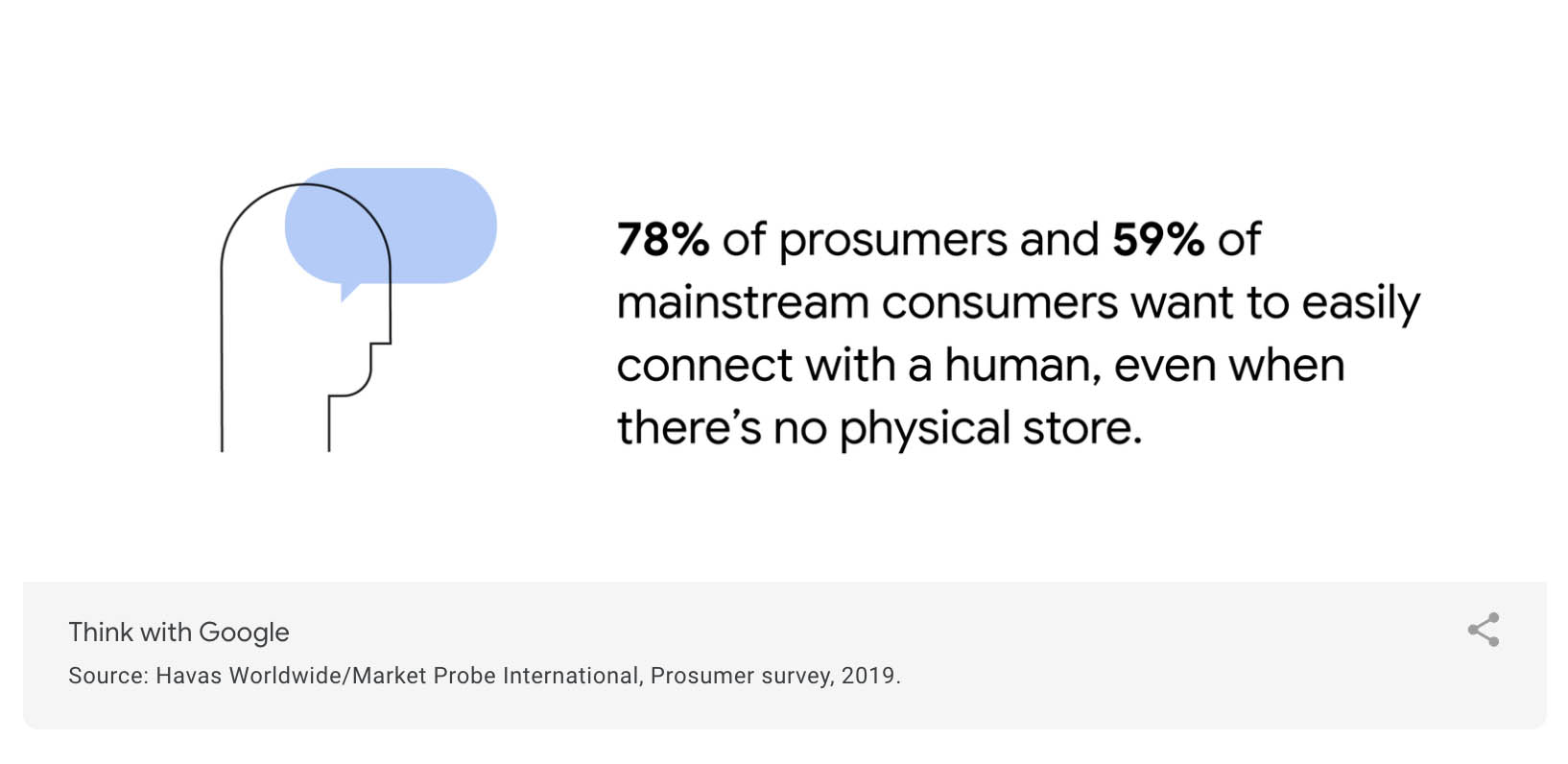
Stephanie Nerlich, CEO at Havas Creative Network, claims that 78% of prosumers and 59% of mainstream consumers want to easily connect with a human, even when there’s no physical store.
Nerlich considers humanizing experiences the right approach to personalization. In other words, businesses should do their best to catch up to customers’ expectations as soon as possible.
Customers want human connection, with one-to-one professional advice in real time instead of automated chats. It’s safe to say that this is the turning point where B2C and B2B e-commerce trends blend.
One more important fact about the right type of personalization is that modern customers see maintaining online stores as cheaper than maintaining brick-and-mortar stores and expect to get free shipping, free returns, and fast delivery as a reward for their loyalty.
E-commerce Trend 7. Asynchronous Messaging
For most people, a new message from a messaging app makes a moment worth living.
Messaging apps have not only changed the way we communicate with our colleagues, family, and friends but have established a new standard for businesses in communicating with their customers.
According to a survey by Facebook, customers all over the world — 76% in Brazil, 79% in India, 66% in the United Kingdom, and 69% in the United States — claim the ability to message a business helps them feel more confident about the brand.
As one of the latest e-commerce trends, asynchronous messaging has proven a better alternative to traditional synchronous messaging via live chat on an e-commerce website.
This is all thanks to the opportunity to stay connected with a business without time boundaries.
In an asynchronous chat, customers get the freedom to resume the conversation at any moment while businesses can provide a better customer experience when dealing with complex issues.

By the way, a study conducted by Google and Forrester shows that 60% of companies anticipate investing more in asynchronous messaging and other communication technologies in 2021 compared to 2020.
E-commerce Trend 8. Social Commerce
Social commerce is one more groundbreaking crazes in the world of e-commerce business trends. For years, consumers have used social media to buy products they stumble upon by following links to product pages on online stores and marketplaces. After email and search engines, social media is the most popular channel for online shopping.
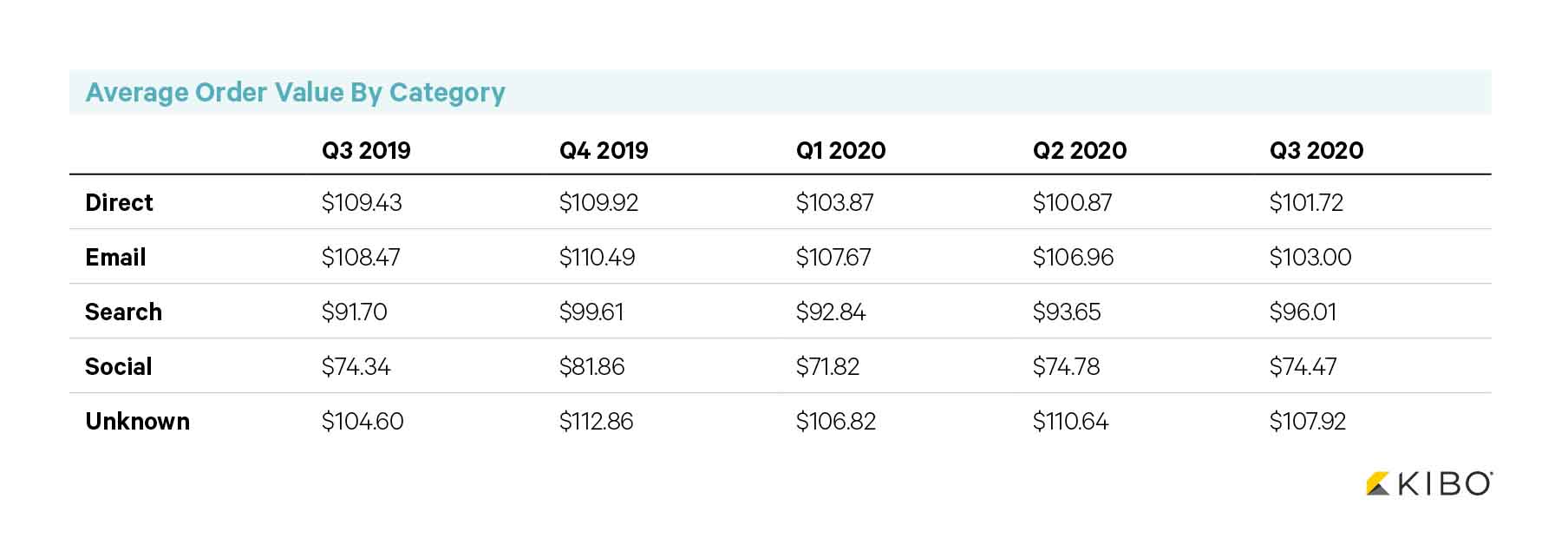
In the Q3 2020 E-commerce Quarterly Benchmarks report by Kibo Commerce, the average value of global online shopping orders on social media amounted to more than $74.
Social media channels are increasingly no longer mediators but fully featured e-commerce platforms. Facebook, Instagram, TikTok, Snapchat, and Pinterest already provide retailers with the possibility of showcasing their products and selling them on-site without driving users elsewhere.
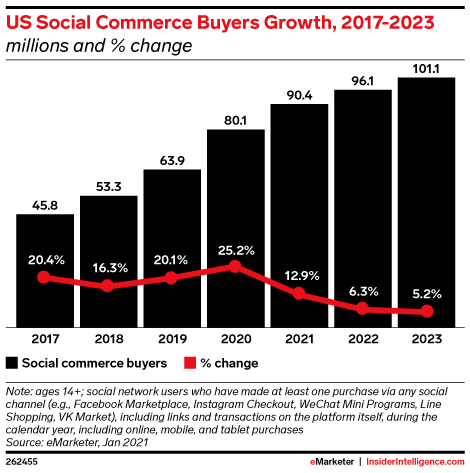
In the Social Commerce 2021 report, eMarketer anticipates the number of buyers across the US social commerce market to grow from more than 90 million in 2021 to over 101 million by 2023.
Obviously, if you’re a business and you sell online, social commerce is a trend you must follow.
E-commerce Trend 9. In-Depth Omnichannel Strategizing
In the time of multiple marketing channels and multiple devices, e-commerce is a hide-and-seek adventure where businesses do their best to gain the trust of as many customers as possible.
When it comes to gaining customers’ trust, creating an in-depth omnichannel strategy is the most essential among all current trends in e-commerce.
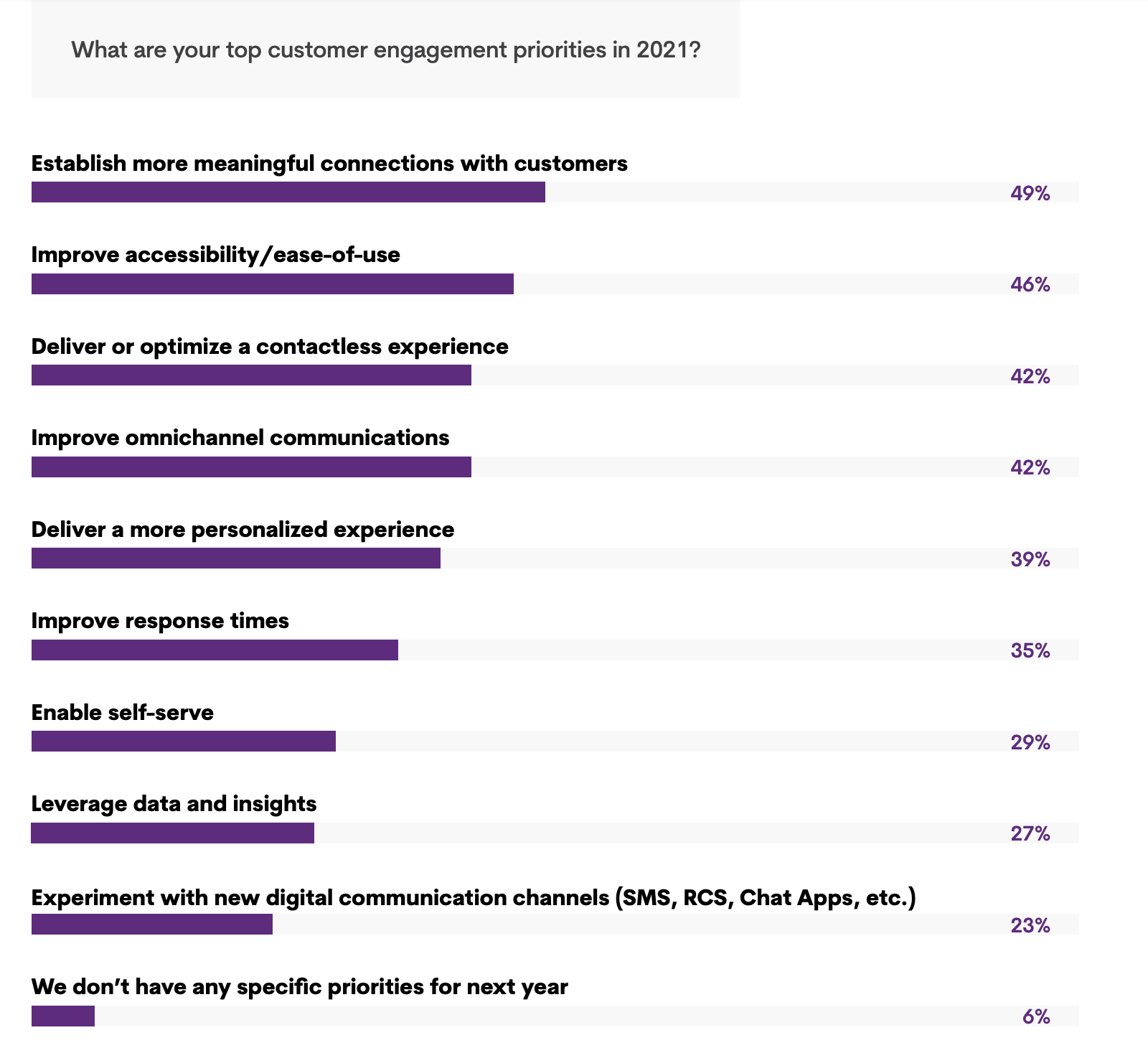
According to the State of Customer Engagement in B2C Marketing report by Mitto, improving omnichannel communications is the fourth top customer engagement priority after establishing more meaningful connections with customers, improving accessibility and ease of use, and delivering or optimizing a contactless experience.
An in-depth omnichannel marketing strategy helps businesses meet customers at the right time and in the right place and guide them to their purchases based on an understanding of their decisions.
E-commerce Trend 10. SMS
That’s right. It’s hard to believe, but text messaging (or SMS) is still alive and is one of the most promising e-commerce trends for the 2020s right next to newer digital communication technologies.
If you take a look at the results of the State of Customer Engagement in B2C Marketing report by Mitto, you’ll see that lots of marketers continue to experiment with SMS and achieve tremendous results in pursuing particular marketing objectives.
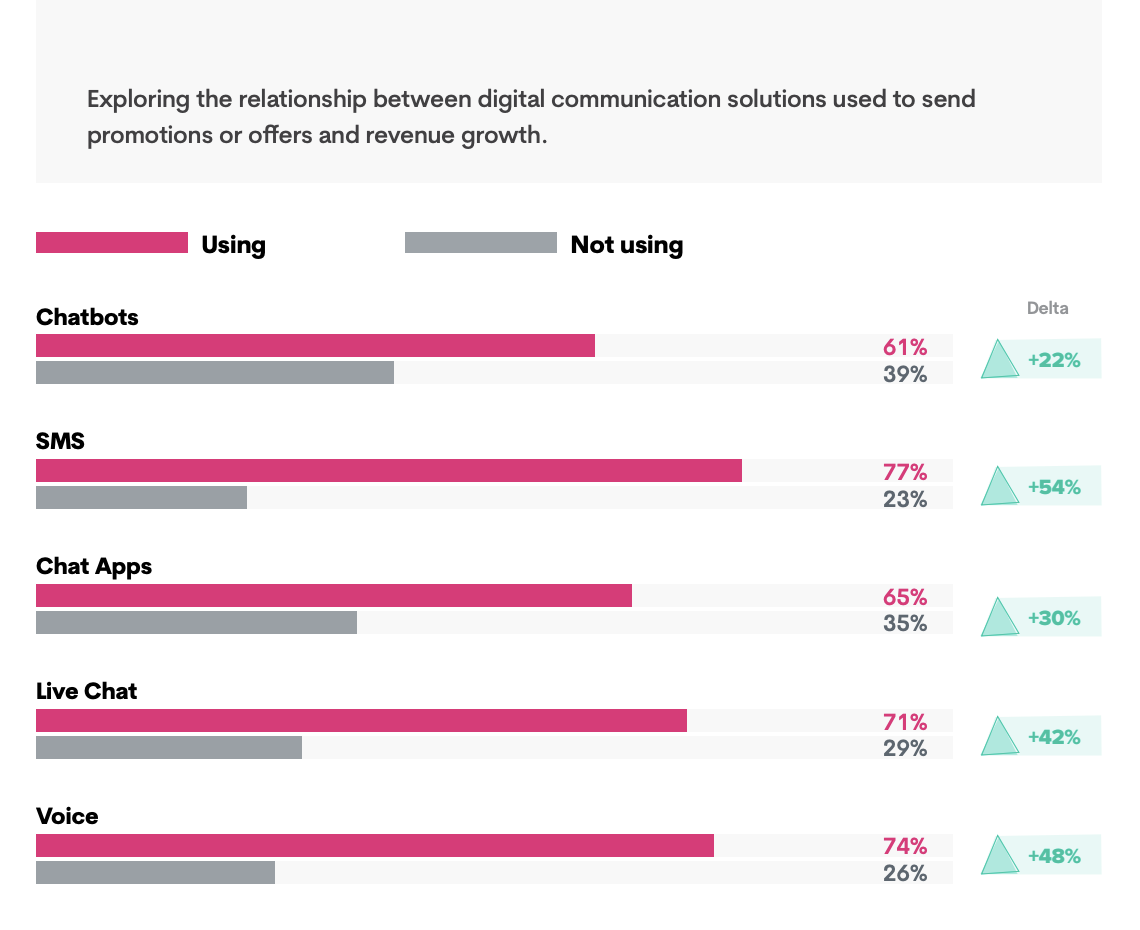
In the 2020 fiscal year, 77% of US marketers reported they used SMS to send offers and promotions and it helped grow their revenue. In addition to that:
- 68% used SMS to send advertising or generate brand awareness
- 63% used SMS to send service updates
- 60% used SMS to solicit customer feedback
- 63% used SMS to send educational or informative content
The report’s publishers stress that leveraging SMS is a must primarily for e-commerce enterprises because otherwise there’s a big risk of being left behind.
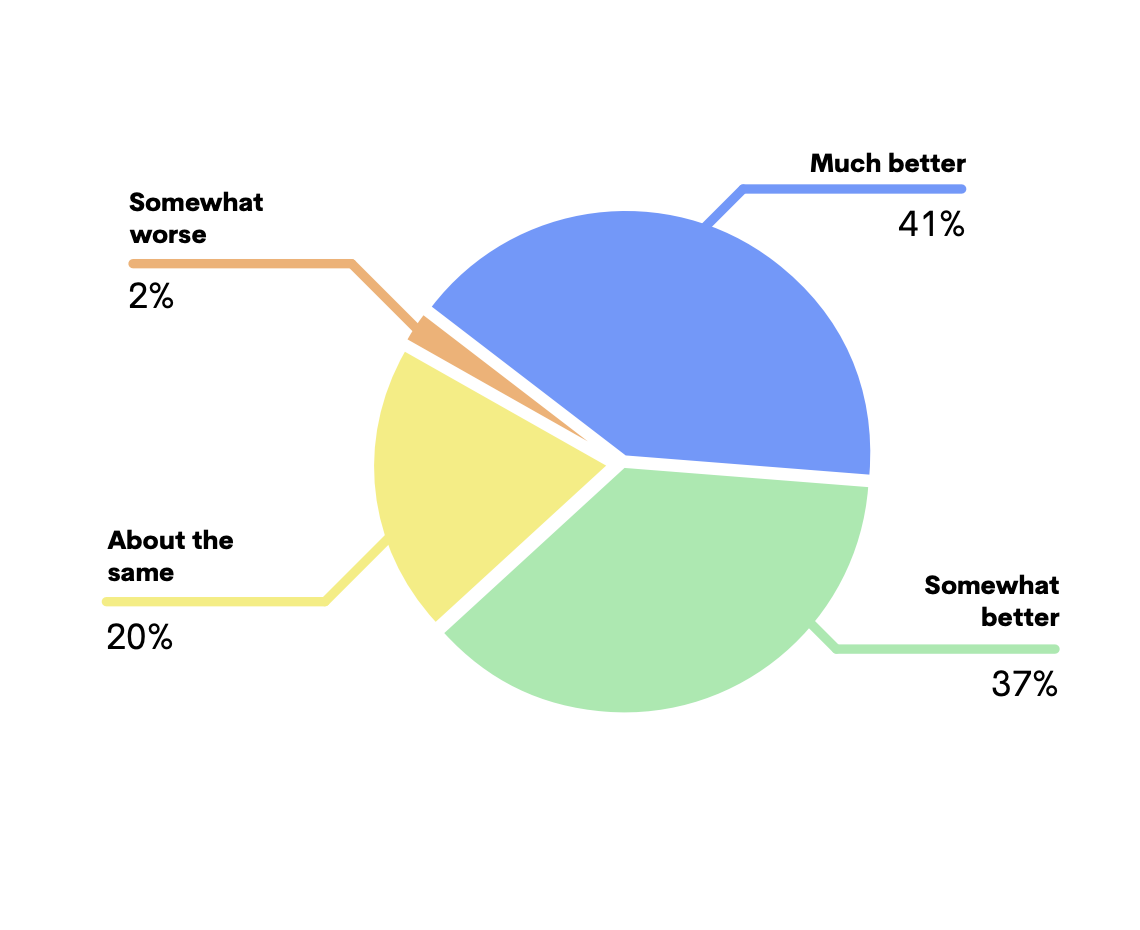
Clearly, businesses of other sizes should consider using SMS too. Almost four-fifths of B2C marketers in the United States claim SMS performs much better than any other channel they use to engage with their customers.
There are plenty of goals this technology can help your e-commerce business reach.
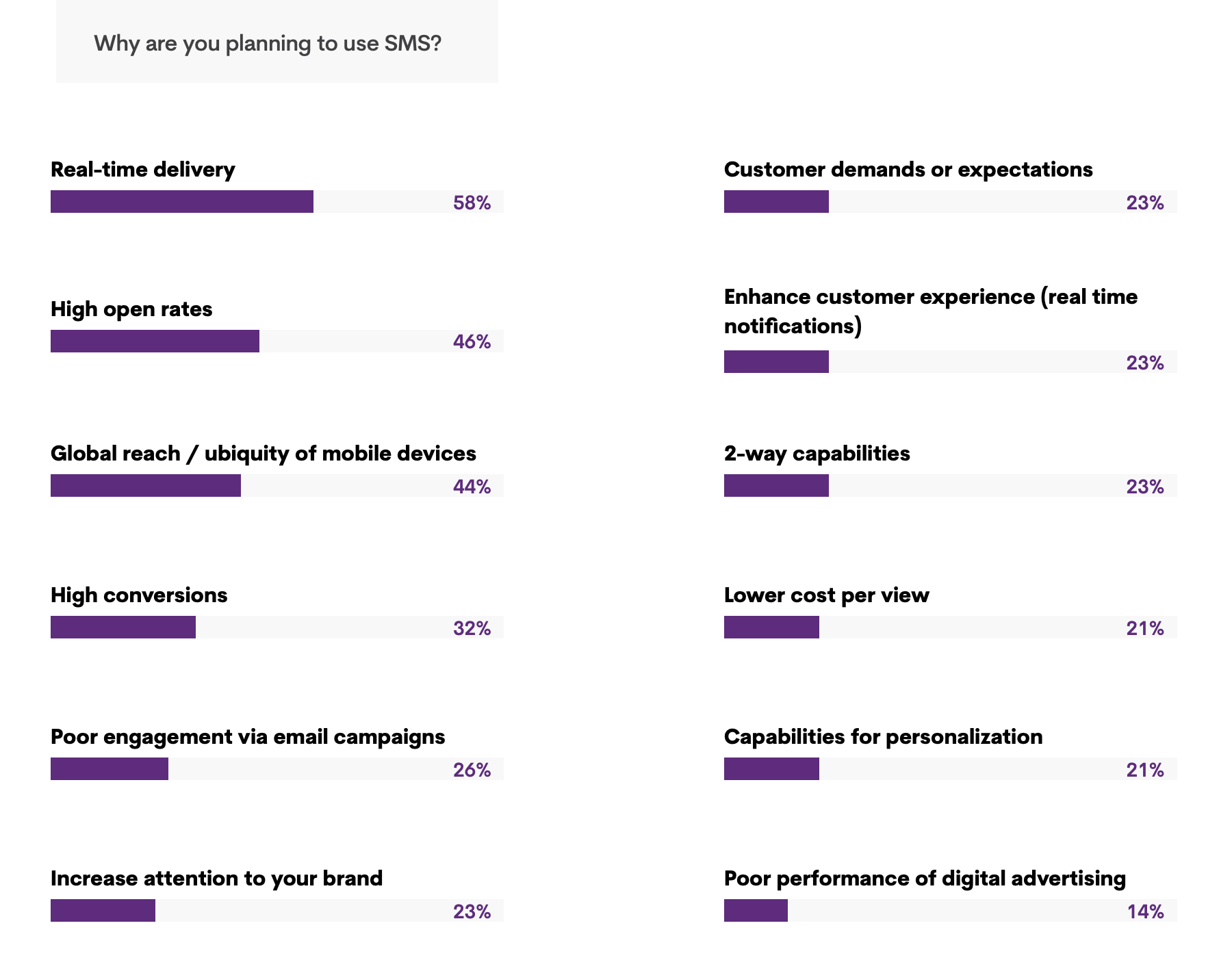
Here’s why US marketers are planning to use SMS:
- 58% — real-time delivery
- 46% — high open rates
- 44% — global reach and ubiquity of mobile devices
- 32% — high conversion rates
- 26% — poor engagement via email campaigns
- 23% — increased brand attention
- 23% — meet customer demands or expectations
- 23% — enhanced customer experience with real-time notifications
- 23% — two-way capabilities
- 21% — lower cost per view
- 21% — personalization capabilities
- 14% — poor performance of digital advertising
E-commerce Trend 11. Live Streamed Shopping
There are a few global trends in e-commerce that will transform the industry’s future. Live streaming is one of them.
Even if you’re no gamer, you’re probably aware the video gaming industry is growing by leaps and bounds. Surprisingly, the industry’s growth is attributed not so much to the activities of professional players (who are considered gods of the gaming world and earn a pretty penny) but to their fans.
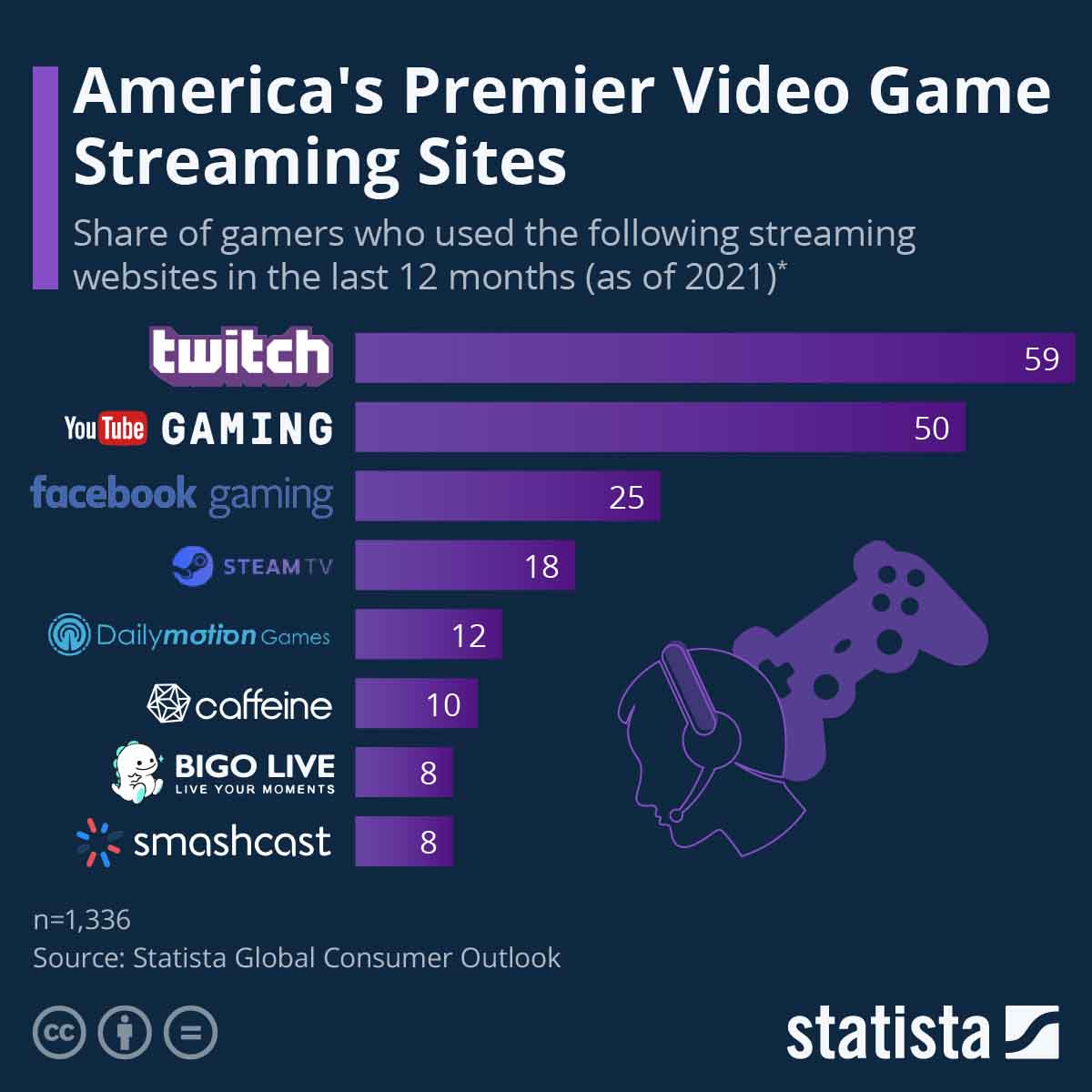
It’s all about the love of their fans watching their favorite players going live on platforms like Twitch, YouTube Gaming, and Facebook Gaming, which are the world’s top three video game streaming websites according to Statista.
However, live streaming is no longer associated only with video gaming. Just Chatting, the only no-gaming live stream category on Twitch, is the platform’s most popular category, and it shows ongoing growth.

According to TwitchTracker, there were nearly 32,000 viewers and 319 channels on Just Chatting in September 2018 at the moment it rolled out. As of April 2021, Just Chatting had over 402,000 viewers and 4,900 channels.
Even though Just Chatting is far from e-commerce, it reveals one important thing — people love interacting live with creators and publishers.
And as it turns out, people are genuinely interested in communicating with brands.
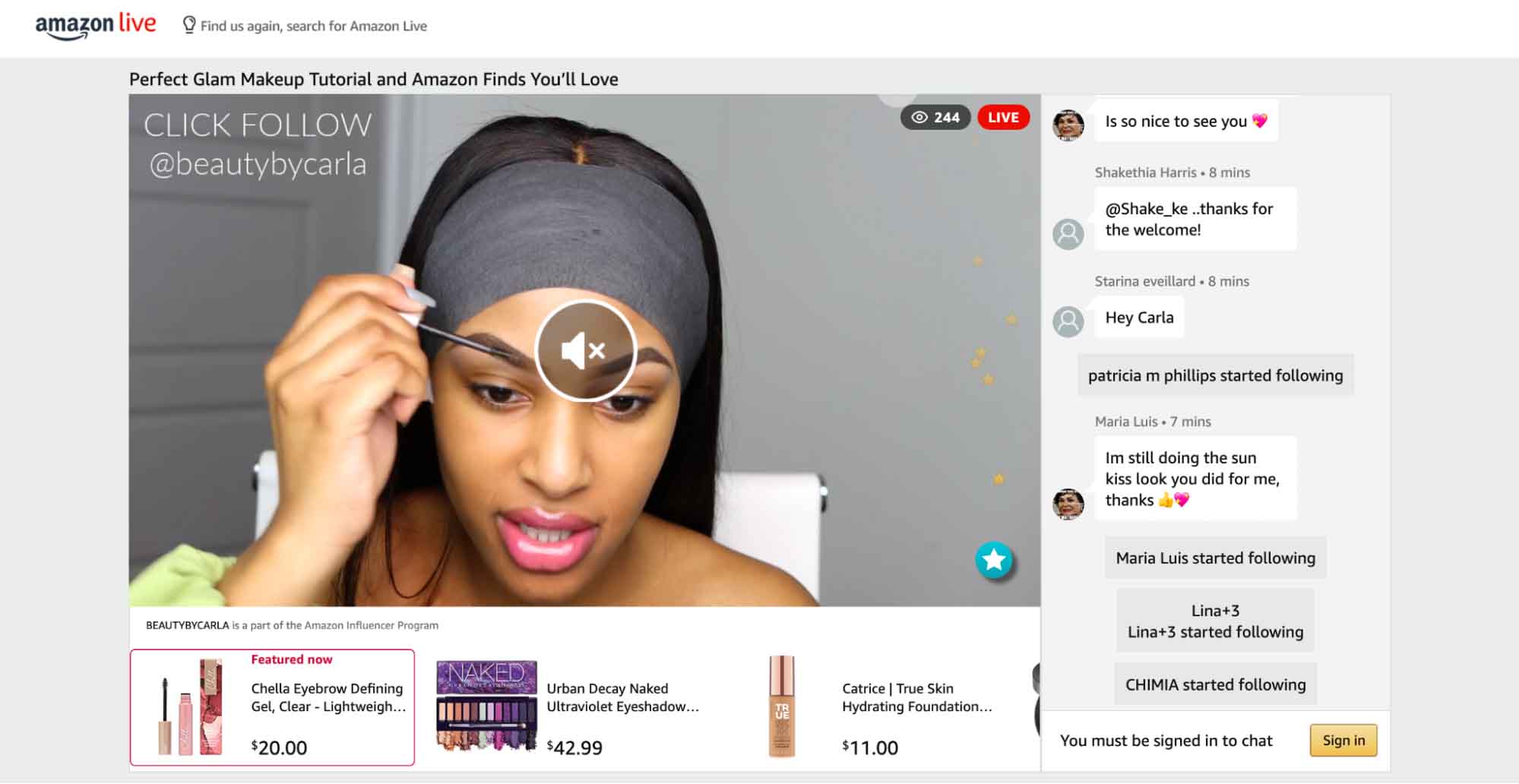
In 2016, Amazon launched Amazon Live to let retailers and businesses promote their products in different ways in real time and, therefore, combine organic and paid advertising in one niche.
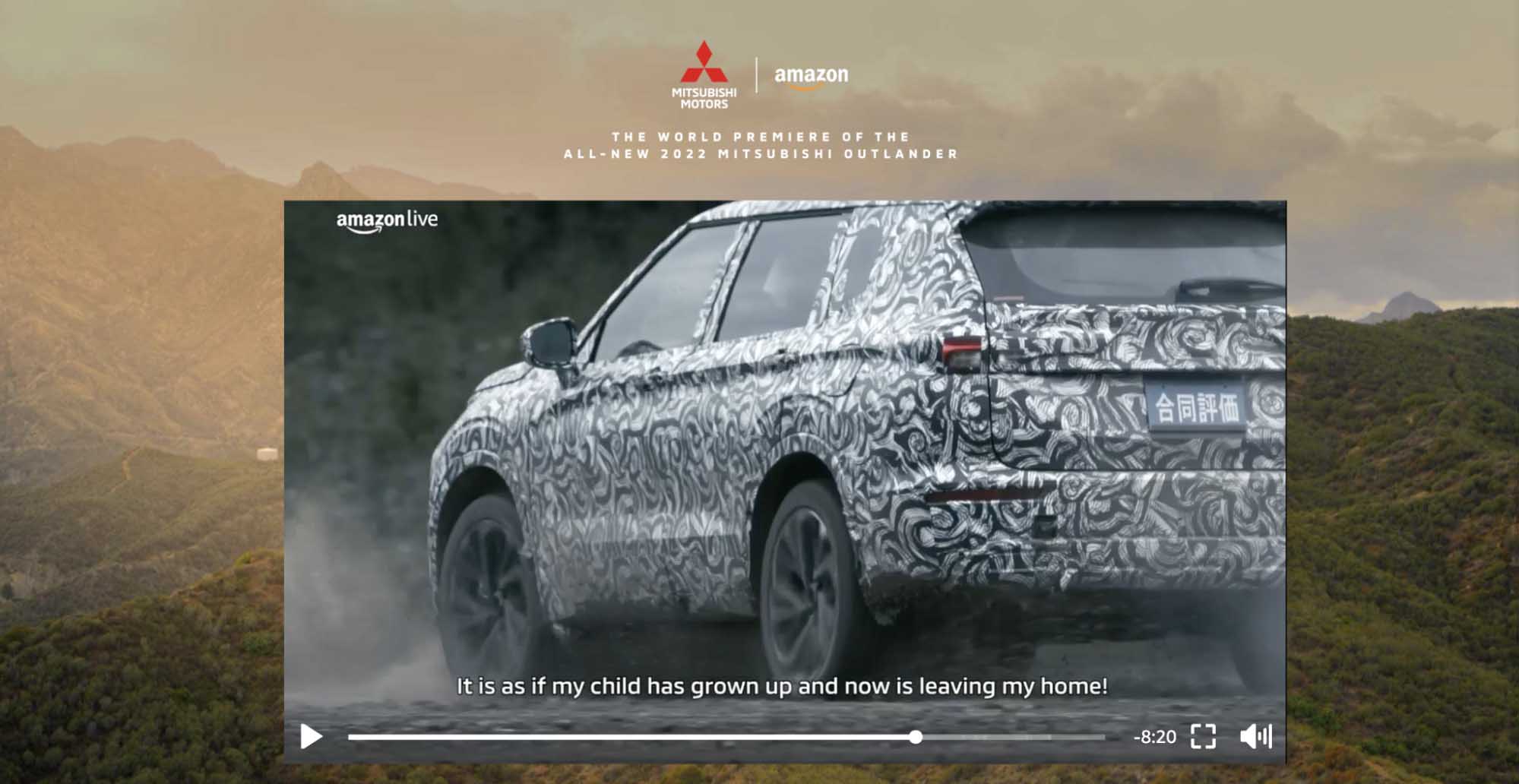
It has reached the point when big brands go live to launch big products. In February 2021, Mitsubishi used Amazon Live to premiere their new 2022 Mitsubishi Outlander. Even though they showed previously recorded footage, it’s evident that enterprises now consider live streaming as an approach to marketing products and services.
The same goes for social media. In May 2021, Facebook introduced Live Shopping as a new feature for Facebook Shops. Facebook Live Shopping allows brands to sell products during a live stream.
According to the Future of shopping has come early: Perspectives from the industry report by Facebook, 49% of customers would buy products directly from live videos where brands, celebrities, and influencers they follow are launching new products.
With the launch of Facebook Live Shopping, the number of such customers is likely to increase.
E-commerce Trend 12. Micro Influencers
Another new thing in the list of major trends in e-commerce is the boom in influencer marketing. Indeed, there are a lot of people who can help companies drive sales just by means of their personal image. Social media has made the number of such influencers skyrocket.
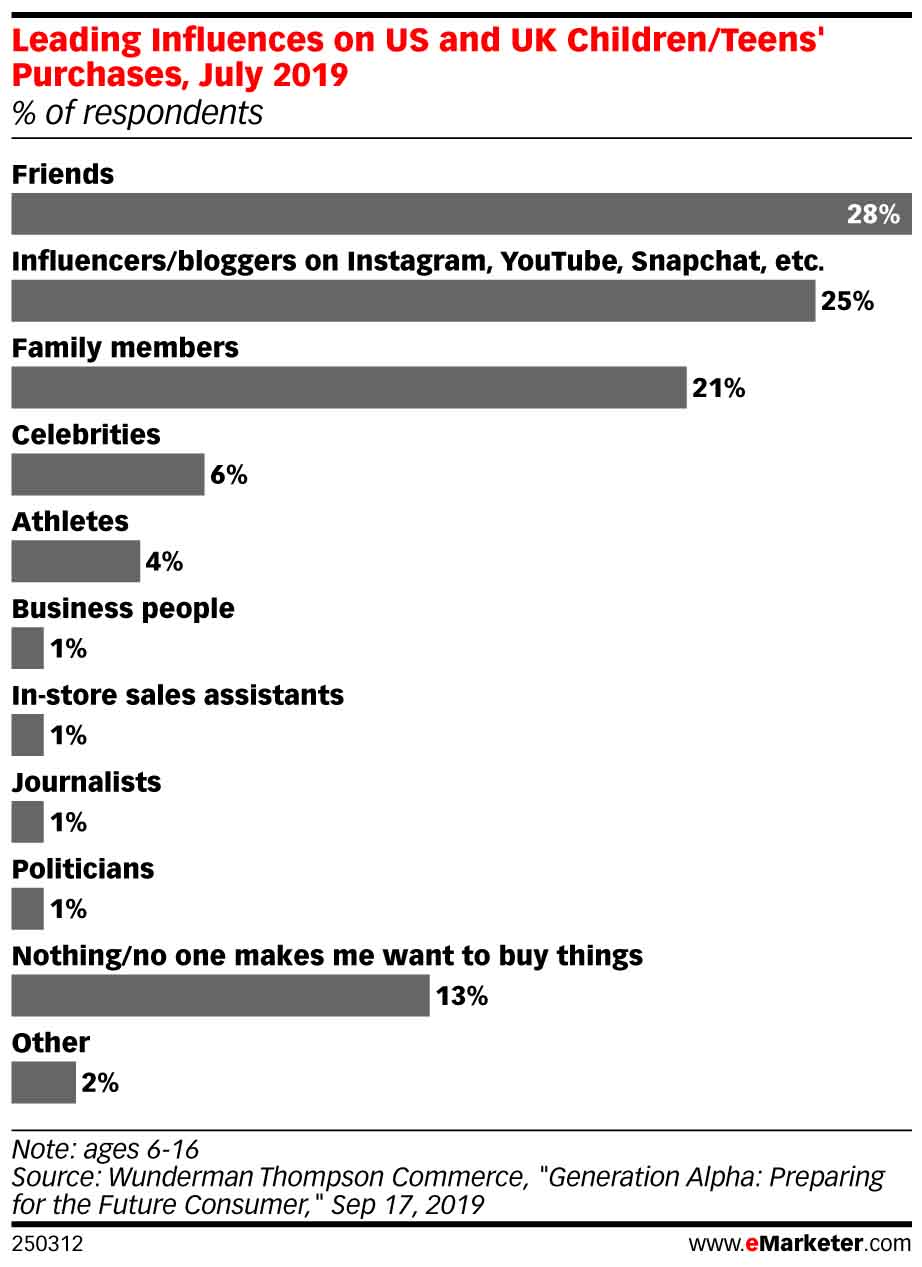
According to eMarketer, creators on Instagram, YouTube, Snapchat, and other popular platforms are the top group of influencers for young shoppers in the United States and the United Kingdom after their friends.
Statista reports that 40% of marketing managers surveyed worldwide used the help of influencers. The estimated size of the influencer market has increased from $1.7 billion and 335 platforms or agencies in 2016 to $6.5 billion and 1,120 platforms or agencies in 2019.
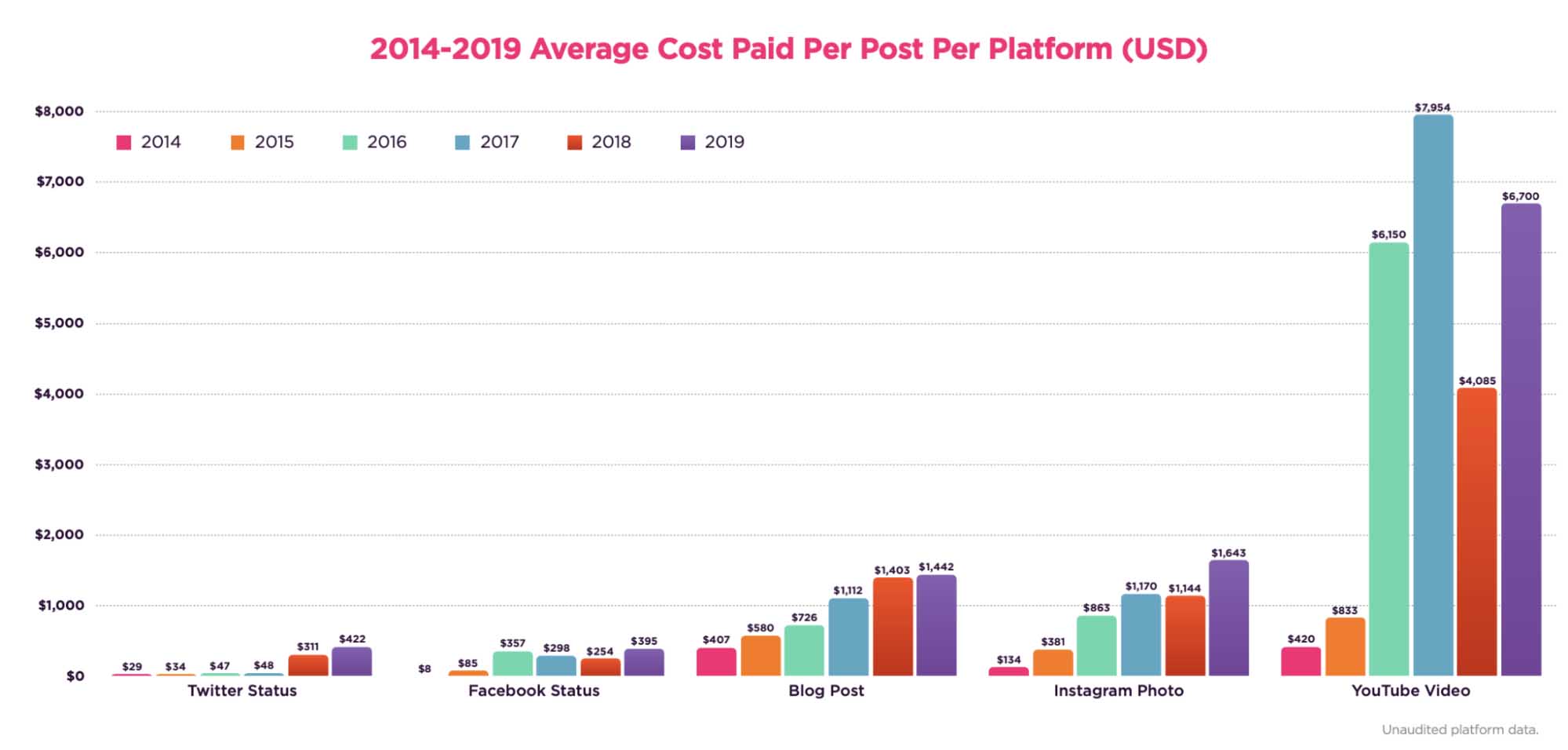
Along with growth in the influencer market size, the value of this market has skyrocketed as well. In 2019, IZEA released a report about the growth of the average cost of influencer marketing:
- influencer’s blog post has increased from $7,39 in 2006 to $1,422.27 in 2019
- Instagram photo has increased from $134,04 in 2014 to $1,642.77 in 2019
- Twitter status has increased from $29 in 2014 to $422 in 2019
- Facebook status has increased from $8 in 2014 to $395 in 2019
- YouTube video has increased from $420 in 2014 to $6,700 in 2019
Influencers have disrupted the sponsored content market. Despite such an increase in pricing for influencers’ content, collaborating with influencers is still more likely to be more effective and cheaper than hiring a traditional advertising agency.
E-commerce Trend 13. Video Advertising
When it comes to trends in e-commerce marketing, video is a really amazing thing which is going through a renaissance. This medium is the best way to inform, educate, and entertain customers with any habits and interests.
Not to mention that once overpriced and sophisticated to produce, e-commerce videos have become more accessible than ever.
Thanks to the immense advertising potential of YouTube, Instagram, TikTok, and other top video platforms, e-commerce companies can achieve any marketing goals with a small budget. A huge variety of available video hardware allows any marketer to record professional footage for an e-commerce video in minutes.
Are you planning to produce e-commerce video ads? You can produce them as fast and as cheap as image ads using Softcube — a user-friendly platform that optimizes the cost of video ads by making their production simple.
Powered by artificial intelligence, Softcube crawls product listings to find the best footage for your business, uses a set of ready-made templates to enrich the appearance of each video ad, and provides all the necessary tools to simplify the editing process.
It offers everything you need to produce e-commerce video ads at a large scale and in the shortest terms.
E-commerce video ads like this one:
Happy e-commerce marketing in 2021 and beyond! For details, contact our support team at support@softcube.com.
